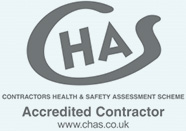Face Fit Testing – Respiratory Protective Equipment (RPE)
What is qualitative face fit testing?
A Face Fit Test is a certified practice and precaution by HSE (Health and Safety Executive) to ensure that Respiratory Protective Equipment (RPE) is able to provide, at the very least, adequate protection for every employee that requires it.
Qualitative fit testing is for filtering facepieces (disposable masks) and half masks, not full-face masks. The tests rely on the wearer’s taste response to detect face seal leakage of a test agent (Bitter or Sweet). This method involves a ‘Sensitivity Test’ and ‘Fit Test’ step which must both be conducted with the same test agent.
In order to fairly test the above agents, the following 7 exercises must be conducted for 1 minute each. The exercises are as follows:
- Normal Breathing (1 minute)
- Deep Breathing (1 minute)
- Moving head side to side (1 minute)
- Moving head up and down (1 minute)
- Bending over (1 minute)
- Talking (1 minute)
- Normal Breathing Again (1 minute)
Why do we need face fit testing?
Simply put, it’s a legal requirement. As an employer under the regulations for COSHH (Control of Substances Hazardous to Health Regulations 2002), all Respiratory Protective Equipment (RPE) at work requires you to ensure that it is adequate and suitable for the wearer, task and environment.
In addition, RPE can’t protect the wearer if it leaks. A major cause of leaks is poor fit – tight-fitting facepieces need to fit the wearer’s face to be effective.
As people come in all sorts of shapes and sizes it is unlikely that one particular type or size of RPE facepiece will fit everyone. Fit testing will ensure that the equipment selected is suitable for the wearer.
Facial Hair Guide
Facial hair (stubble and beards) make it impossible to get a good seal of the mask to the face. When you breathe air in, it is drawn into the filter material where the air is cleaned. If there are any gaps around the edges of the mask, contaminated air will pass through these gaps and into your lungs. It is therefore very important that you put your mask on correctly and check for a good fit every time.
If there are good reasons for having a beard (e.g. for religious reasons), alternative forms of RPE, that do not rely on a tight fit to the face, are available.








